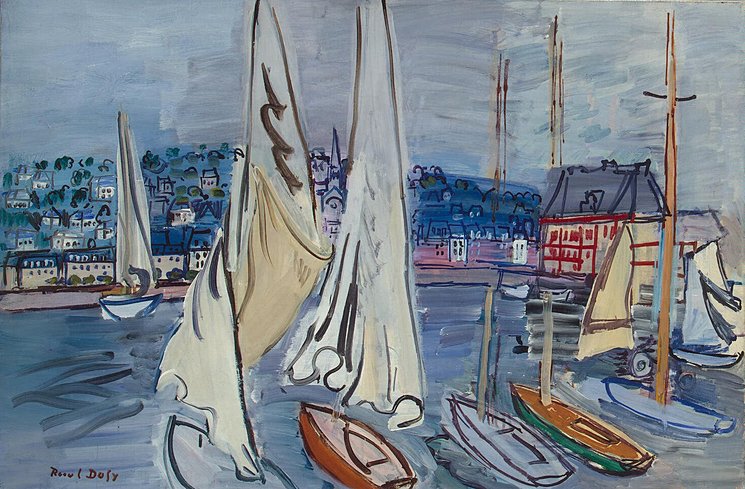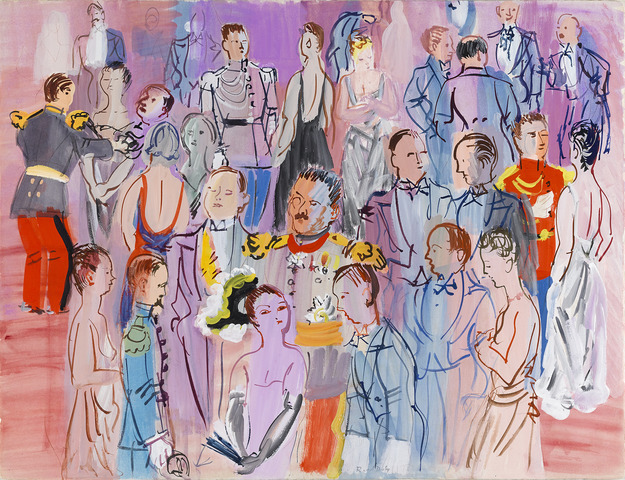RAOUL DUFY (1877-1953)
Raoul Dufy was a late 18th century french painter who explored different mediums such as woodcuts, ceramics, and tapestries. In 1912, Dufy became the founder of a textile company, where he made textiles out of cotton and silk. What motivated Dufy to pursue art was for his first job working as a junior clerk at a coffee importing firm. This was where Dufy witnessed many boats that he felt ignited to enroll himself at Le Havre’s Ecole des Beaux-Arts shortly after. Dufy’s work is defined as fauvism because Dufy tended to use plenty of bright colours in his paintings. Dufy’s subject matter of choice were horse races, regattas, parades, and concerts.

https://www.wikiart.org/en/raoul-dufy/the-hunt-design-for-fabric

https://www.arthermitage.org/Raoul-Dufy/Sailing-Boats-in-Troville.html
Dufy is an artist whose work I can picture on the cover of a magazine or poster. When I look at Dufy’s work, I gain a sense that Dufy was not afraid of taking risks. Not only does Dufy use a wide range of colour in majority of his pieces, the detail on Dufy’s work is quite minimal, yet has enough information that I can gain a sense of what the image is suppose to resemble. My first impression when I saw Dufy’s work was that Dufy was an artist not to be taken seriously. His works such as “The Kessler Family on Horseback” feel playful and lively. This might be because of the painting scenes of his choosing.

https://www.tate.org.uk/art/artworks/dufy-the-kessler-family-on-horseback-t03566

https://www.artsy.net/artwork/raoul-dufy-la-reception-a-lamiraute-reception-at-the-admiralty

https://www.artic.edu/artworks/23639/open-window-nice
Sources:
https://www.britannica.com/biography/Raoul-Dufy